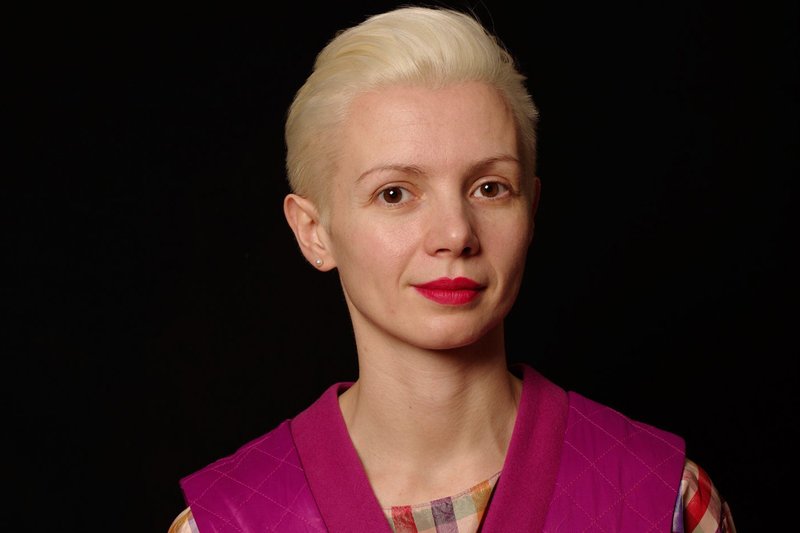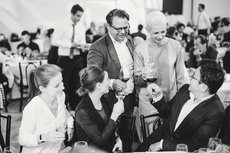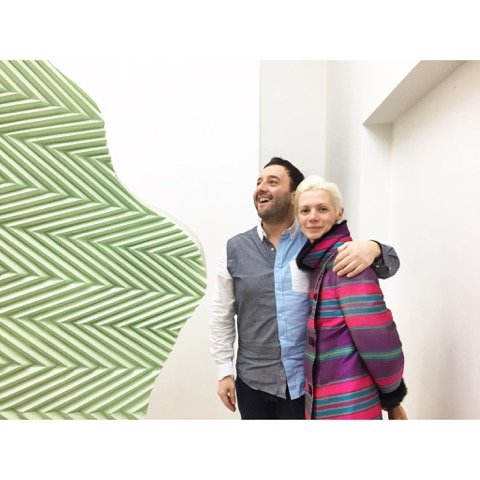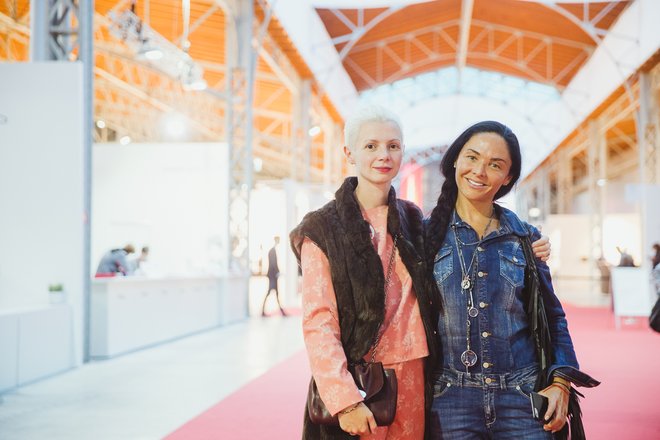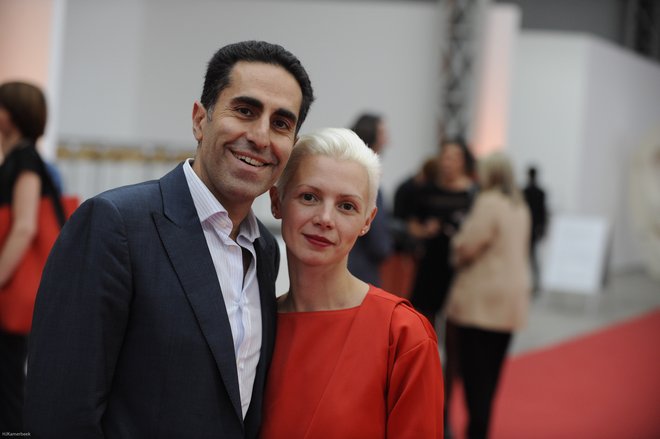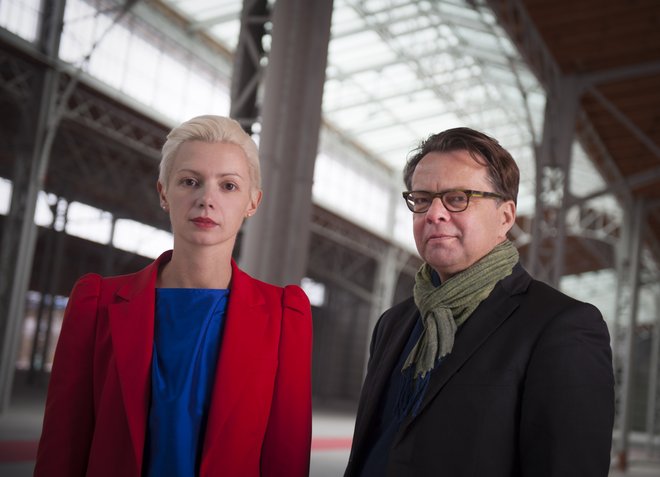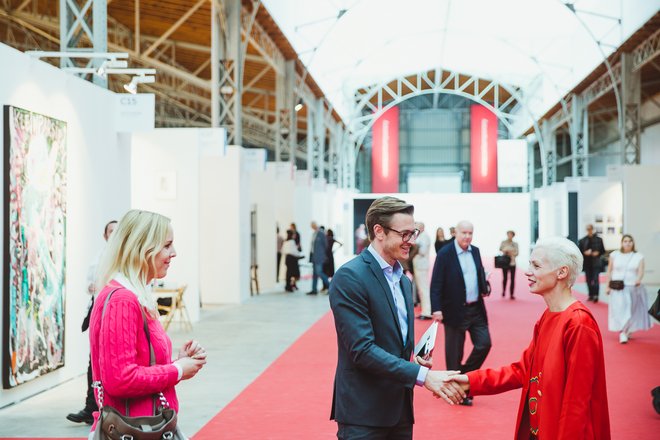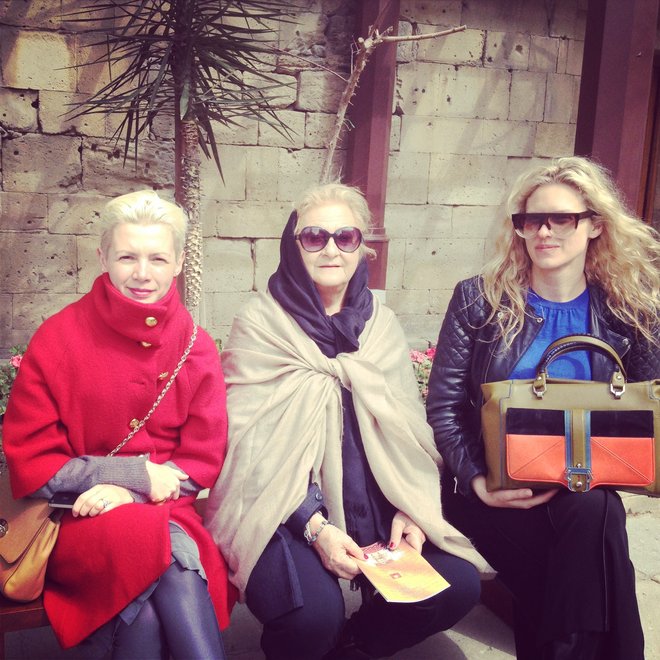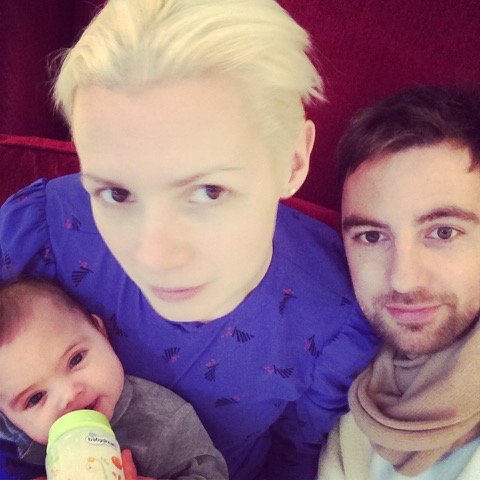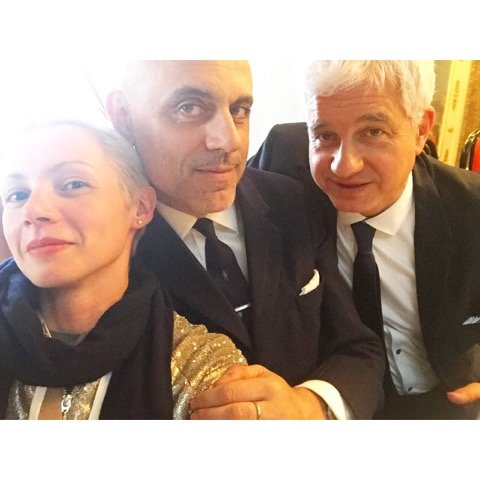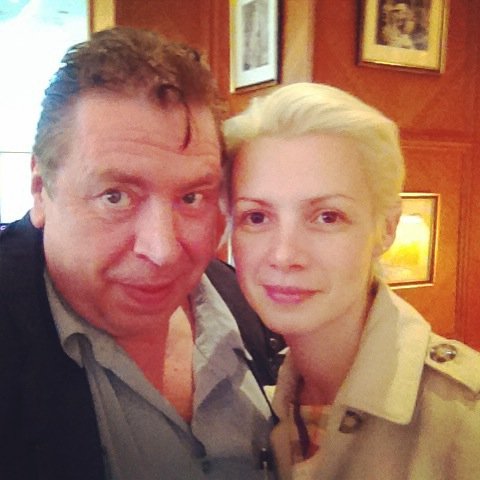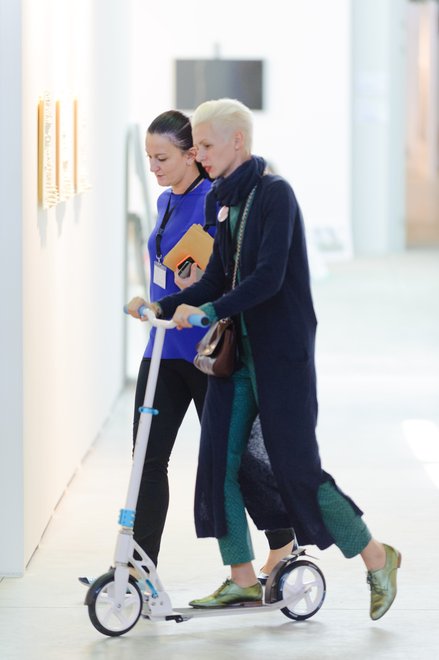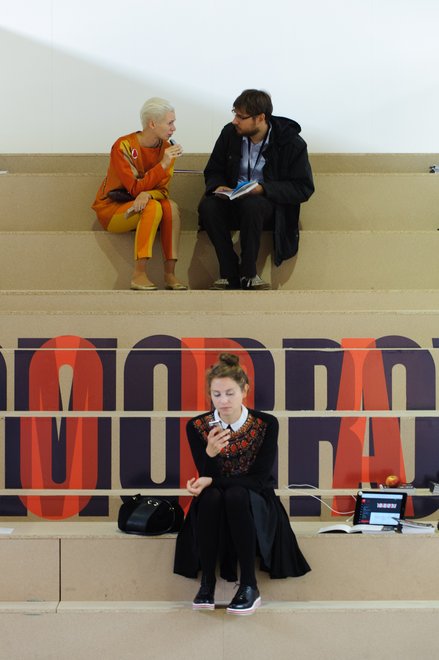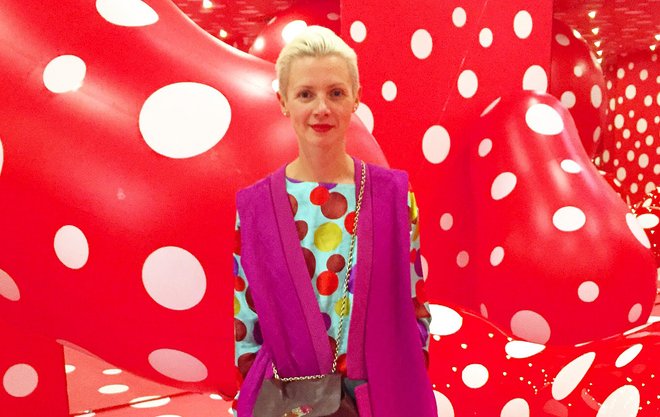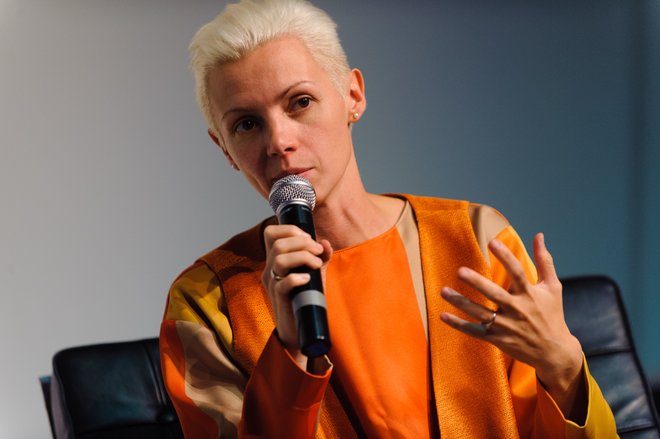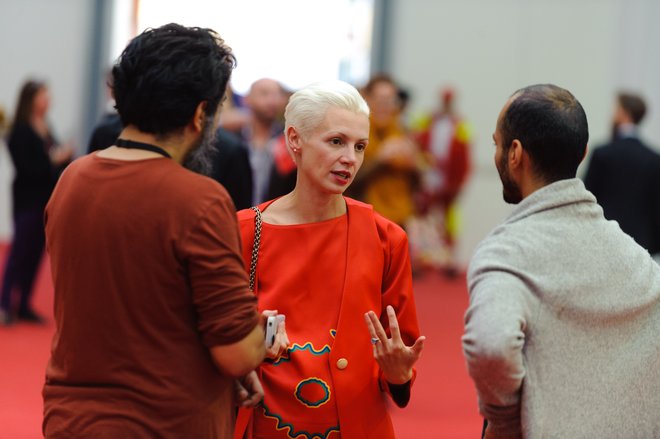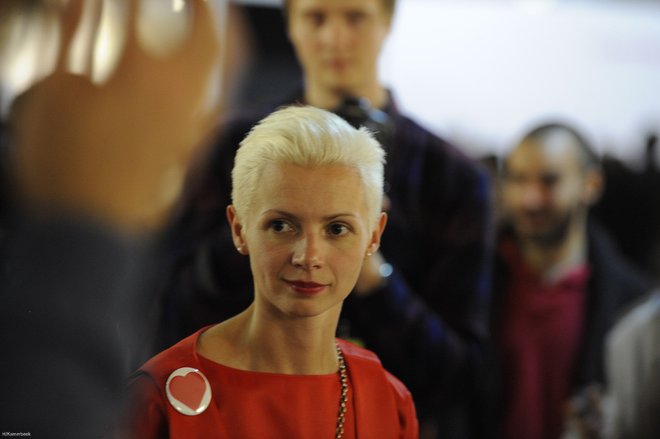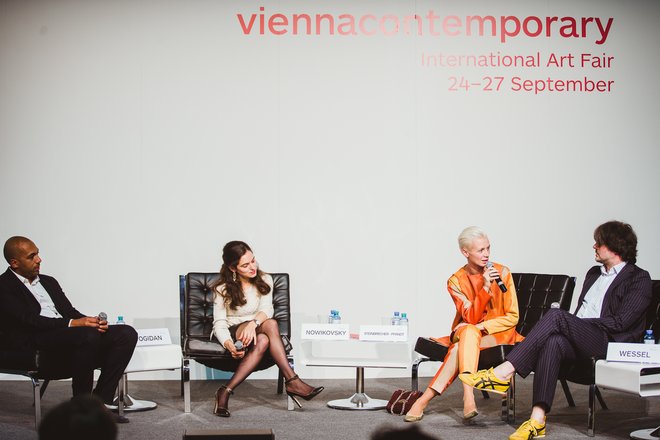No day passes without arts
Christina Steinbrecher-Pfandt is the artistic director of Vienna’s art fair viennacontemporary, which opens its doors every September. Vienna, she says, is finally on the radar of the international art scene. The frequent flyer tells us why nobody wants to go to London anymore, why artists are moving to country towns, and why Eastern European art is back on the shopping lists of collectors.
Antje Mayer-Salvi: You have three iPhones on the table! You need them all at the same time?
Christina Steinbrecher-Pfandt: Yes, I use them all at the same time! (laughs) It is easier for the people who want to reach me when they call me on local numbers. The gray one is for my Russian team and the office there, the red one for Austria, where I am now living together with my family. I am practically always available on that one. The turquoise cell phone has good roaming conditions. My husband gave me the tip. He works in the telecommunication sector.
That already says a lot about you: Austria, Russia, Germany, organized, very international, and a whole lot of traveling! And hours on the phone?
No, not really. I do many things with SMS and WhatsApp. It depends a lot on the generation of the person I am communicating with. The 50+ers want a telephone call at some point, preceded by an introductory mail. Those under 40+ prefer not to speak in person. That follows the trend of preferring to just drop a few short lines to one another. Short! Nobody has time anymore for long exchanges. When I make longer calls, then it is private, with friends.
"The initial trigger for my passion for art was the major Keith Haring exhibition there back in 1998!"
You communicate in two languages, at the same high level, right?
Yes, in Russian and German. My mother is a German Russian and my father is a Ukrainian German. My ancestors were from Hessen near Frankfurt. They were invited to Russia by Catherine the Great to work in agriculture. Later, under Stalin, the Russian Germans were expropriated as a minority and banned to the desolate and poor areas of the Soviet Union – in our case to Kazakhstan, where I was born and grew up in my early years.
The expelled Germans could keep their identity?
Yes, my grandmother spoke with me in old Hessian German, like at the time of Catherine the Great! Then at the age of eight I immigrated (back) to Germany with my family.
You are known as being pretty tough and business-minded. Is it in your genes?
I think so. That’s my Protestant grandmother coming through. My mother ran a department store and my father was an athletics coach for Kazakhstan. I also studied business administration initially at Maastricht Business School. My understanding of economics has always helped me in the art industry, above all in running an art fair. The galleries are businesses to whom we offer our services. We should be able to understand their business model quite well.
But you are the artistic director – not the business manager – of viennacontemporary. Where does your passion for art come from?
In my youth my family lived in the center of Cologne across from the Museum Ludwig. An initial spark of sorts was the major Keith Haring exhibition there back in 1998. I was captivated by the topic of AIDS and the New York art scene. When Kaspar König became director I essentially mutated into a permanent visitor. I watched the culture program “Kulturzeit” every day on 3Sat. The “Feuilleton” section of the Frankfurter Allgemeine newspaper was also a big influence; I had a subscription since the seventh grade. After my business administration studies my classmates wanted to go to Goldman Sachs, Bayer, or Procter & Gamble. But I didn’t find that a fulfilling life goal, helping a brand to sell more shampoo.
"London has become a sort of administration office for art – just posh and without any spirit."
You went to London instead?
I was there between 2006 and 2008 for my masters in contemporary art and worked for private collectors and galleries in the east of London.
The city was the hub of the art world then!
It was fantastic! It seemed like everyone was constantly on the go. At that time there was like 50 small galleries that newly opened. Everyone was interested in the latest emerging art. I still have good contacts from this time. Yeah, and then there was the Lehman Brothers crisis and things went downhill. I was recently there for the Tate Modern opening. London has become a sort of administration office for art – just posh and without any spirit.
There’s more creative minds leaving London than there are coming in. Where are they all going?
They’re moving to Manchester, Athens, places where life is still affordable. About one-and-a-half years ago there was an academic reform in Great Britain. Artists can no longer teach without proof of official qualifications. That’s a predicament for many who managed to keep their heads above water with teaching. So a lot of people are moving to the university cities in the north, places like Nottingham, where they can still make money teaching. The situation for middle age artists is generally not that easy.
Do you think Vienna is hyped because the hip metropolises are collapsing?
In any case. In New York, by the way, things aren’t all that bad. There’s more money being made, bigger sums at the auctions, but New York isn’t so posh, and it’s a far more creative city. It is more open, people are given the chance to realize their dreams. One listens when somebody has something to say. Things are too proper in London – doors don’t open without a recommendation.
"Here in Vienna you can visit art institutions at the highest level!"
What’s Vienna’s position?
Currently there are global brands – the Frieze art fair in London, Art Basel and Art Basel Miami – which cater to the top end of the market. But parallel there are many markets for other attractive formats and art forms, which are interesting for enterprises and collectors with or without investment plans. viennacontemporary positions itself as an art fair for these target groups. There are participating galleries at viennacontemporary that are also present at the Frieze and in Basel, but they are perceived differently here in Vienna, where they exhibit together with other young, professional international galleries, above all from Eastern Europe.
This middle level – everything under a million, people say – has a difficult time in the art market at the moment…
No, not necessarily. There are more potential collectors who can be attracted. viennacontemporary addresses international galleries who are looking for a good partner that understands what it means to offer quality. Moreover, our focus is quite unique. 30% of the exhibitors are from the Eastern European region.
What makes viennacontemporary better than other fairs?
The high-end collector goes to one of the main global fairs, first to the stand of his favorite regular gallery, then to the second, and then to the third, and then he goes to the cocktail party of the favorite gallery, then to the party of the second and the third and so on. He simply walks by them all and is not surprised. There are no coincidences. In Vienna we prepare a lot of diverse contents for the visitors and buyers. There are hardly any fairs that go to such lengths. Our mediating role is very important: We help in the discovery process, personally and with total commitment. That’s why major collectors also travel to Vienna. A third of the buyers come from Austria, a third from Eastern Europe, and a third from the rest of the world. Many come from neighboring countries. We always attract a lot of collectors from Belgium. There will also be a good number from Scandinavia as there is a related focus this year.
"Vienna is the epitome of contemporary lifestyle!"
Do they also come for Vienna?
Of course, they love Vienna! Nobody wants to lose time on logistics. People who earlier would have paid an arm and a leg just to be invited to an exclusive event at the Frieze, for example, simply aren’t bent on hanging out in traffic jams and eating poorly anymore. It’s better to tackle the megacity in the off-season. Otherwise it is just stressy. In short: Quality has to be at one’s finger tips. Here in Vienna you can reach everything on foot, visit high-grade art institutions, and to top it off, eat great food at a wide range of different places.
Why did you decide for the job in Vienna actually? You could probably boast other offers.
It definitely has to do with this East-West thing, which I essentially embody when you look at my biography. I’m always between two cultures, so I can also play a good mediator. I know how to talk art with the business people and business with the art people.
And you are courageous and adventuresome. You’re still pretty young, yet you have a stellar career as a cultural manager in your pocket, like in Moscow…
Well, I just didn’t have time to get bored! As I remember, I was just working all the time when the whole culture and start-up scene blossomed in Moscow – there wasn’t anything else. So what! I was young, still didn’t have a family, that was OK. I wanted to change the world. It didn’t matter. Eating and sleeping were side issues. What I learned back then was to clearly understand what I was doing because the situation can change in a blink of an eye. The challenge was to adapt quickly but to continue pursuing your vision. In Germany many people were desperate in that respect. But when you are rational enough and understand the structures, you can tackle it pretty relaxed.
Do you pass as a Russian native in Moscow?
Yes, for sure – despite the German name. But sometimes I also come across as a strict German… That’s my two cents worth on the topic of prejudice! But in Vienna I speak German more often with my little daughter and my German husband. I’m a bit lazy there. When my family comes to visit the conversation is naturally in Russian.
Positioning Vienna internationally with an art fair wasn’t exactly a piece of cake, I imagine?
A few years ago Berlin was still the Mecca and Berghain was the temple. Being recognized beside hip Berlin was practically an impossibility. The newsmakers between 20 and 40 put all of their energy behind it. Then everyone wanted a faraway place, so art fairs in Mexico and Rio. Now this trend is also over. Everyone got their selfie in front of Oscar Niemeyer.
Vienna was to stuffy for the newsmakers?
Unfortunately the newsmakers had absolutely no associations with Vienna. The 50+ generation had at least a political, cultural, and social idea of Vienna – but the younger generation had no idea. But we’re past this wave. Vienna is on its way to where it has always belonged. The epitome of contemporary lifestyle. We are essentially living in Vienna how it is idealized in popular lifestyle magazines: cultural enthusiasts, “organic” underway on our bicycles, surrounded by absolute nature.
Thank you very much for this interview.
Christina Steinbrecher-Pfandt was born 1983 in Kazakhstan. She studied at Manchester University in Great Britain, where she graduated with a Master in Contemporary Art in 2007. In addition to her role as the artistic director of Art Moscow from 2009 to 2012, she also co-curated the exhibition “Unconditional Love” in the framework of the 53rd Venice Biennale and was a member of the curatorial team for the 3rd Moscow Biennale 2009. She was responsible for the artistic direction of VIENNAFAIR The New Contemporary together with Vita Zaman in 2012 and 2013. In December 2014 she became the artistic director of viennacontemporary.

